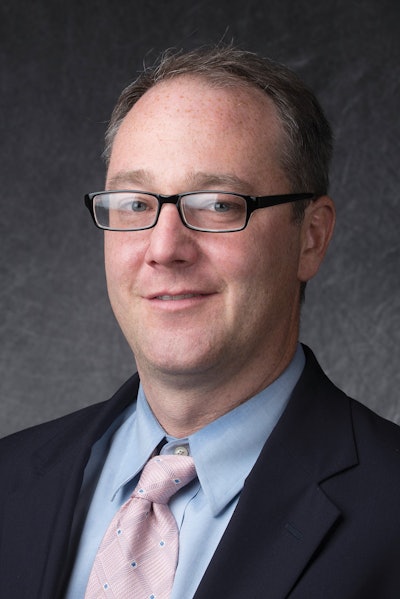After witnessing yet another inhumane murder of a Black man at the hands of police, rage permeated across the country. Smoke plumed over city streets populated by peaceful protestors, looters with varied motives, news media, and law enforcement. Mayors of Minneapolis, Los Angeles, Washington, DC, New York and more, stood staunchly behind the right to protest and the need to contain COVID’s spread.
Just two weeks earlier, and in some of the very same cities that saw protest as a result of George Floyd’s murder, throngs of protestors, a significant majority of them White and middle-to-upper class, poured onto steps of city halls to voice their desire that businesses re-open for the sake of the economy. These campaigns and protests appeared to take shape under the guise of an economic necessity.
In Michigan, Georgia, Wisconsin, Washington, and more, some reopen protestors waved Confederate flags and held signs emblazoned with Swastikas. These protests were found to have been catalyzed, in part, by The Proud Boys, a racist yet savvy group of White nationalists operating in new ways to move the country toward a racist agenda.
It is hardly a stretch to see the images of looting displayed across the nation’s television and computer screens on May 30, 2020, as reactions to the same extreme white nationalists present at some of the reopen events. For it was Dr. Martin Luther King, Jr. who noted: “We know through painful experience that freedom is never voluntarily given by the oppressor; it must be demanded by the oppressed;” and later, after noting that white complacency toward oppression is the singular most dangerous threat to American society that “a riot is the voice of the unheard.” His point was not that rioting is justified, but the inevitable outcome of a society that continuously oppresses.
What King also noted and that is becoming more and clearer and dangerously true is that oppression occurs even by well-meaning people and institutions if they are not actively seeking anti-racist agendas. For instance, on May 29, 2020, The Centers for Disease Control hosted a nation-wide phone call with presidents and vice presidents of academic institutions focused on best practices to bringing students back to campuses while reducing the risk of spreading COVID-19. While the presentation itself was helpful, the majority of it focused on concerns that would be central to residential colleges, not community or vocational colleges.
 Dr. Michael H. Gavin
Dr. Michael H. GavinThe worries about protests leading to COVID outbreaks, bringing students back to schools are similar in their problematic frames. They not only see COVID and institutional racism as separate issues, but they also see a return to normal from a perspective that continues to dismiss the importance of focusing on those areas and institutions that serve communities that have consistently been attacked by institutional racism.
For instance, there is every reason for community colleges to be the foremost concern about CDC guidelines and federal funding from CARES act. For the students at community colleges overwhelmingly work day-to-day at jobs and live in neighborhoods of close proximity—they are particularly vulnerable to COVID. As a result, is clear when we consider the intersection of education, poverty, and housing, COVID responses need to consider race a lens that assists in prioritizing action. But it is an American tradition not to consider African-American bodies and experiences as a point of focus. We know this from the simple fact that the killing of Black men by people in authority is a centuries-old practice. We know this because reopen protestors are voicing an opinion that puts African-American bodies more at risk. One has to wonder how many reopen protests would have occurred if COVID affected those using computer screens more than any other population.
Education, business, politics, COVID and the economy cannot continue to be discussed as separate entities. A common nexus unites all of them in an apparatus so strong and forceful, that we, an American culture, are loathe to accept its reality: That nexus is a new form of White nationalism that is permeating the structures and thoughts of society more and more.
White nationalism has for a long while, and can no longer be misunderstood as a movement that is visible and carried out only by those with white hoods. The face of White nationalist activism is changing in the twenty-first century. And it is changing so quickly and significantly that the county is at a tipping point where it must decide whether or not it will 1) allow its inertia to continue and become further normalized; or 2) resist it fully in aspirations of delivering on the American ideals that most of us proclaim we believe in.
This moment of June 2020 is dangerous because the activists of White supremacy are changing. White nationalist activists are permeating the very political system we rely on to progress us toward justice. June 2020 also represents a dangerous moment because, as my first book, Sports in the Aftermath of Tragedy, illustrated, Americans of the twenty-first century have short attention spans. Protesting equates to activism. But true activism requires sustained work. We are in a dangerous moment because groups like the Proud Boys are infiltrating the power structure in a pervasive and long-term way while, as Yeats once wrote, it is the tendency for “the best [to] lack all conviction,” once the protests end.
Additionally, many Americans want to resist the truth that White nationalism is baked into the origin of every single institution in America—from higher education to politics to sports to media. This is a truth that means White nationalism cannot be eradicated without intentional and ongoing attacking of it in a pervasive way. It has to be attacked in the same way cancer is in the body. Learning about racism does not eradicate it. Long-term, committed action does. Institutional racism is eradicated though intentional, systemic obliteration of the norms that have made poor and African-American voices silenced over the centuries. Instead of thinking about how to bring students back to college campuses in the context of COVID, higher education and CDC needs to consider institutional racism as a disease, one that literally threatens African-American lives. The questions about colleges in the context of COVID should not be how to bring the same students back to the same campuses. No, the question should be how higher education institutions’ place in the American imagination need to be recast to change the truth that race so often dictates living conditions and subsequent health outcomes.
The nexus of our social, economic, political, and education institutions in White nationalism is clear when we consider that the worries people express about COVID spreading as a result of protests throughout the nation are focused on the immediate rather than the underpinning history and long-term future. Those worries should be reframed to ask why the same bodies that are dying at the hands of police officers have a COVID death rate 250% that of Whites according to the CDC. Although many of the people making decisions about and responsible for the manner in which policies are being made may be well-meaning, if they are not forthrightly and intentionally addressing the perpetuation of poverty and racism, the normal they will reinforce after these riots and COVID come to closure, will be the same one that has always threatened Black bodies while minimizing the risk for Whites. The institutions and mindsets will, in short, continue the work of the New White Nationalism.
Now is a fundamentally important moment. For politics. For businesses. For education. And for the American nation. Now is a time we must transform how education is situated and thought about in terms of its ability to disrupt intergenerational poverty and the inertia of White nationalism. Now is a time that we must work to disrupt the inertia of geographical separation of races and the conditions that lead to high death rates among African-Americans because of diseases like COVID or murderers like Derek Chauvin who killed George Floyd. It is moments where we, as a country, are responsible for disrupting the inertia of institutional racism wrote James Baldwin in “Sonny’s Blues.” One of the most poignant scenes of this story is when his narrator is travelling through Harlem noticing the housing projects he grew up in and escaped from, but which many of his peers did not.
It is through real transformation of how we use higher education at the national level, through funding those institutions that serve people like those boys Baldwin’s narrator witnessed, that we can begin the true work of an anti-racist agenda. It is through truly disruptive thinking that the normal we eventually return to can be one that begins the long-term work of obliterating racism.
Dr. Michael H. Gavin is vice president for learning at Anne Arundel Community College.


















